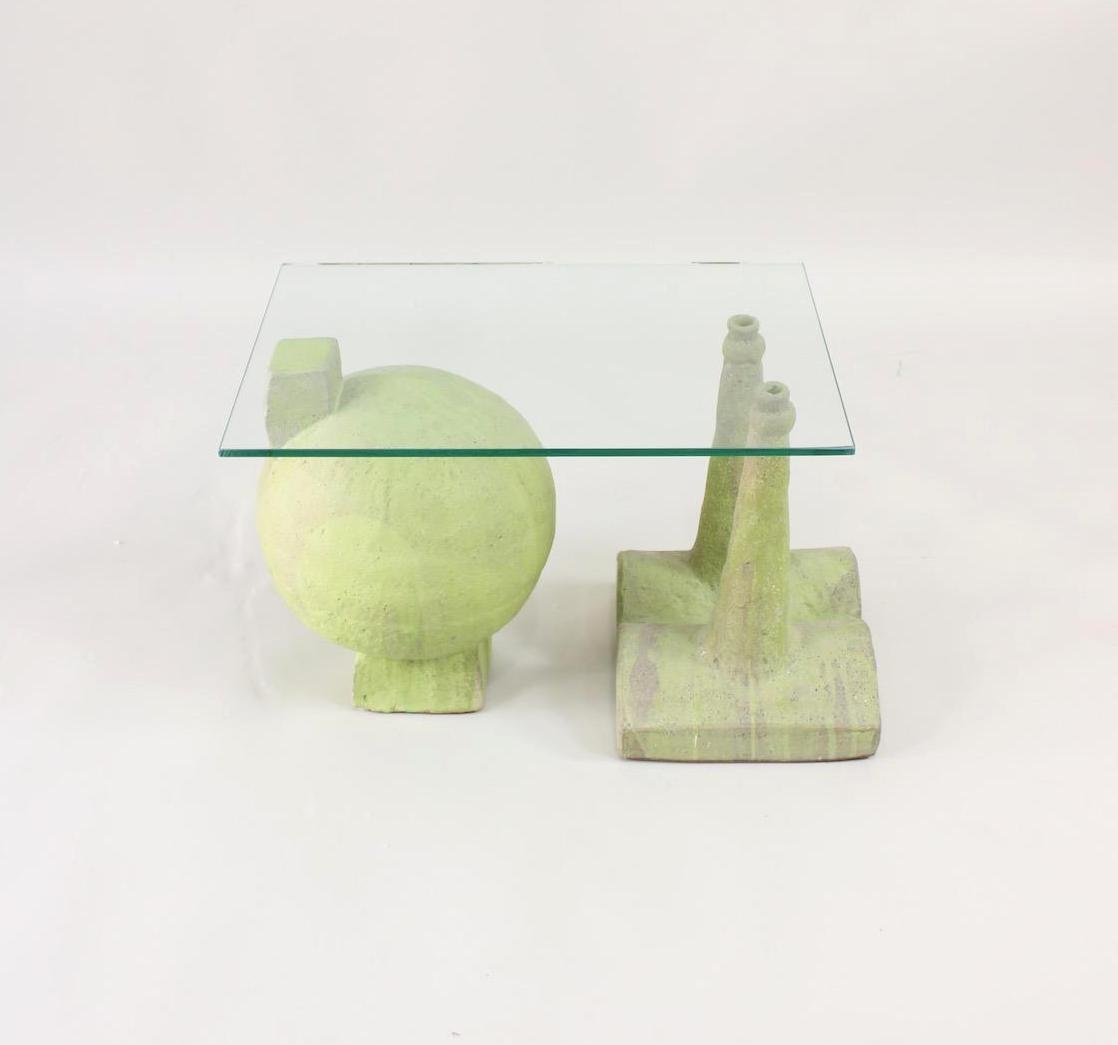Arnie Zimmerman and the Labor of Clay
Public Sale’s upcoming auction features eight works from the estate of Arnie (Arnold) Zimmerman (1954-2021), internationally renowned ceramic sculptor.
Zimmerman’s studio in Hudson was located next to the Public Sale, and it has been our daily privilege to see his work up close, since the sculpture garden Zimmerman created in honor of his daughter, titled “Izzy’s Room,” sits directly on the other side of our office wall. Through the windows his monumental rock walls and sculptures, interspersed with paths and plantings, create a sense of serenity that is imbued with a dynamic tension between the permanence of the large, immovable clay and stone, and the embedded labor it took to bring them into this specific form and arrangement.
The works on offer in our Knowledge Acquired auction include three early works from the 1980s, three larger works from the 1990s, and two interesting functional table base sets. As a collection they illustrate moments in the arc of Zimmerman’s career, expanding from early experiments in the tradition of ceramic vessels to larger, more sculptural forms ranging from anthropomorphic to grotesque, with touches of the humor and deformity of the monumental works for which he is most known, to the utilitarian objects Zimmerman returned to in his later years. While it may be difficult to acquire the large works of Zimmerman’s owned by so many major museums, an individual collector might think of these works as monumental in miniature, fitting the scale of the figural series representing human toil that occupied a major part of Zimmerman’s oeuvre.
Boiler Men, part of Zimmerman installation Inner City on view at RISD Museum, 2010.
As we toil away at the work of an auction house—moving, photographing, and cataloging items, and cultivating relationships with clients and customers—we do so atop a deep bed of red clay deposited by the ancient glaciers that carved the Hudson Valley. We see Zimmerman’s garden, one glimpse of his prolific life’s work, and remember that so much of the world around us is formed of this same material. We can only hope to transform it with as much skill, and as much humanity, as Arnie Zimmerman.




